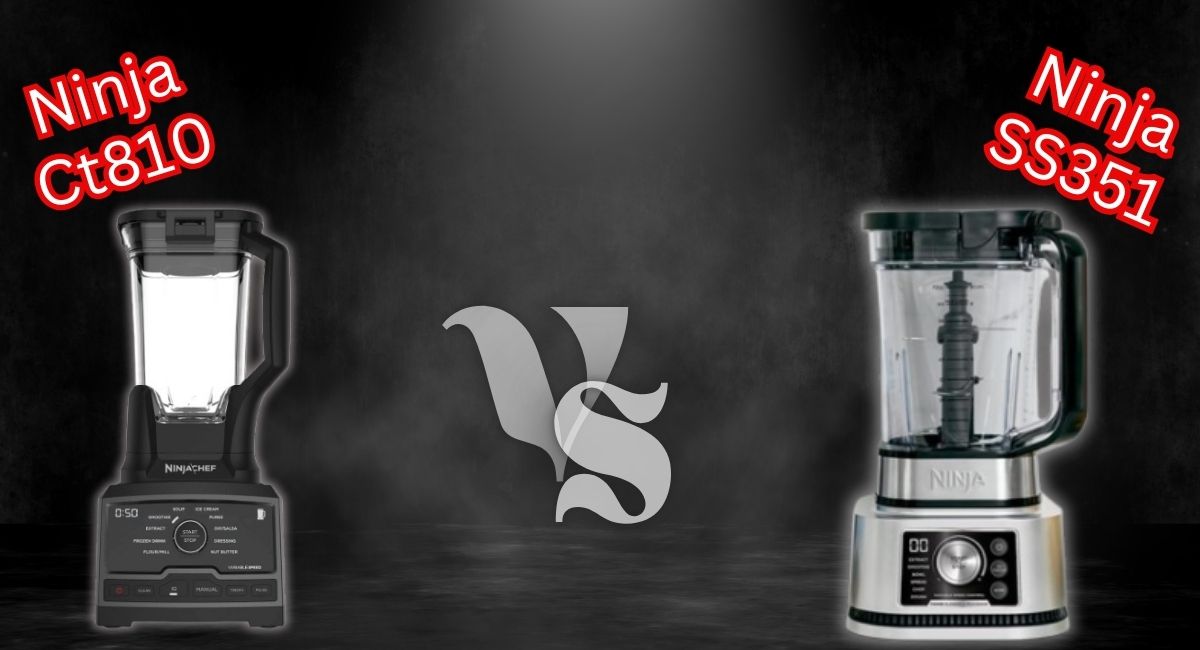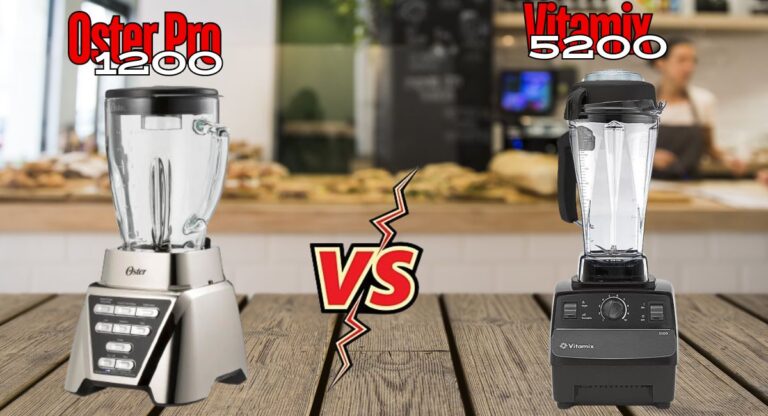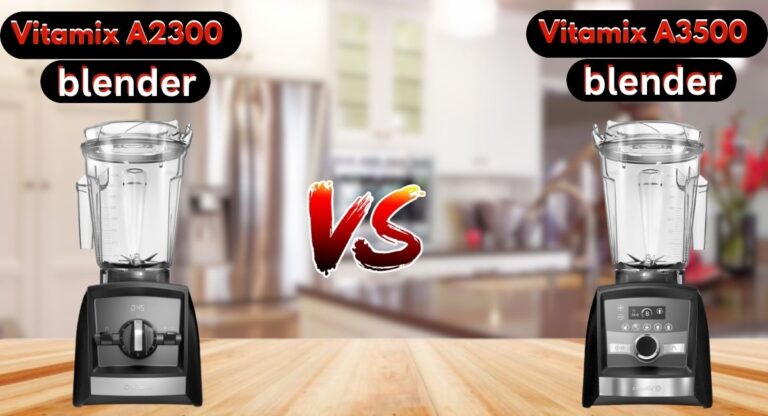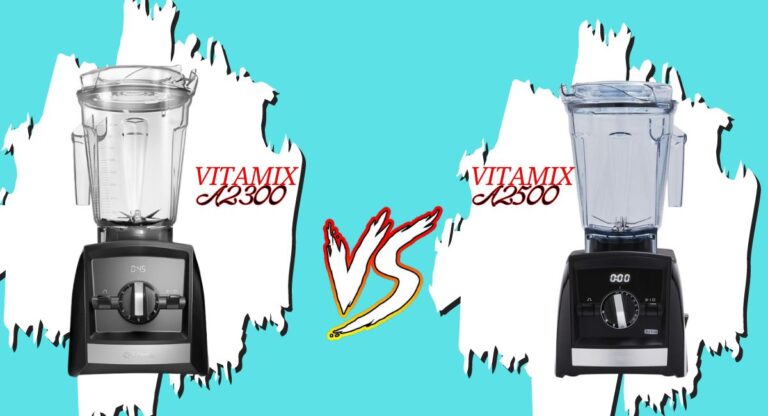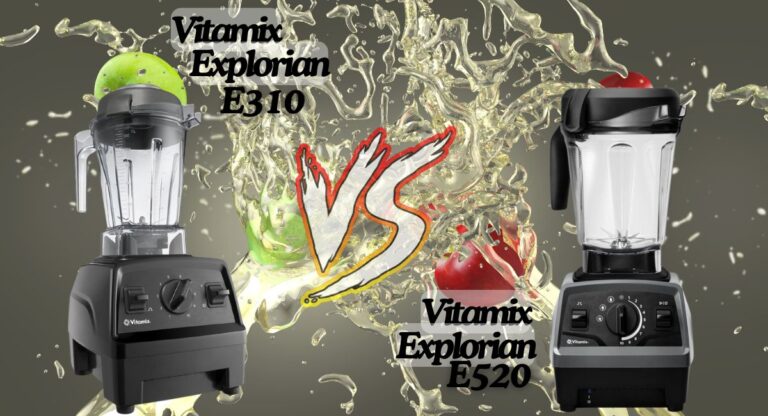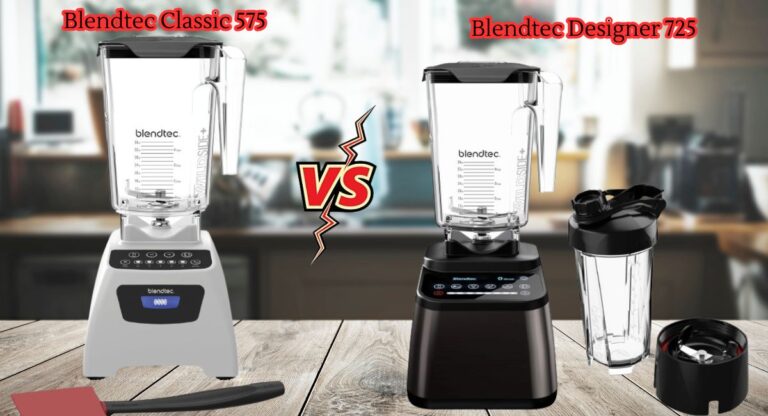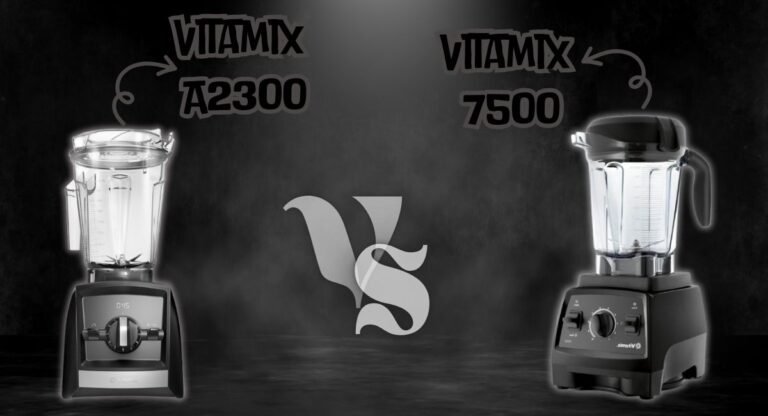Ninja Chef Blender CT810 vs Ninja SS351 Foodi Power Blender
Hey everyone! Welcome back to versusandreviews.us! Today, we’re going to compare two fantastic blenders: the Ninja Chef Blender CT810 vs Ninja SS351 Foodi Power Blender. If you’re on the hunt for a blender that fits your needs, you’ve probably seen these two options pop up.
The CT810 is packed with features and offers a ton of speed settings, giving you a lot of control over your blending. On the flip side, the SS351 stands out with its auto-stirring function, making it super easy to use.
So, which one should you choose? Stick around as we break down their features and performance to help you decide.
Overall Size & Weight Comparison
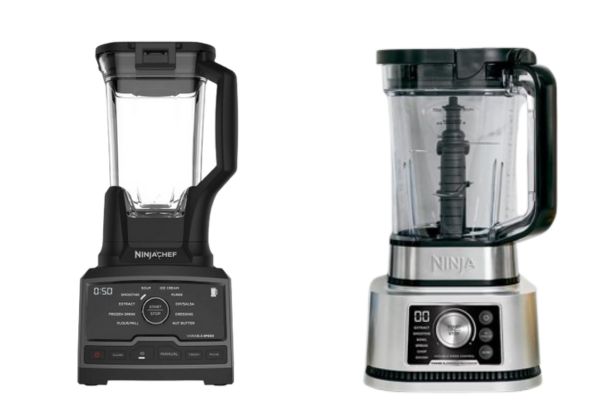
When comparing the Ninja Chef Blender and the Ninja SS351, their differences in size and weight stand out. The Ninja Chef is notably taller at 17.7 inches, while the Ninja SS351 stands at 14.3 inches. This height difference can be significant, especially if you plan on fitting the blender under your kitchen cabinets. The SS351’s shorter height allows it to tuck nicely into tighter spaces, whereas the Ninja Chef might need to stay out on the counter due to its height.
In terms of width and depth, the Ninja Chef measures 8.3 inches wide and 9.7 inches deep, making it a bit bulkier compared to the SS351, which has a slightly slimmer profile at 8.0 inches wide and 8.3 inches deep. If you’re tight on counter space, the SS351’s narrower build can be an advantage, leaving you with more room for other appliances.
Weight is another factor to consider. The Ninja Chef weighs 10.1 pounds, making it harder to move around frequently, whereas the SS351 comes in at 8.2 pounds. This makes the SS351 easier to handle and relocate if needed, although both are sturdy enough to remain stable during use.
Both blenders are countertop models and lack an immersion blender shaft. This means they’re built for stationary tasks like blending smoothies or soups, with no need for frequent repositioning. However, the Ninja SS351 does offer more flexibility with its removable jar, making it easier to store when not in use.
Overall, the Ninja Chef is better suited for a permanent spot on the counter, while the Ninja SS351 offers a bit more flexibility in terms of storage and placement. Both are powerful machines, but the SS351’s more compact size makes it slightly more adaptable to smaller kitchens.
Jar Capacity & Material Comparison
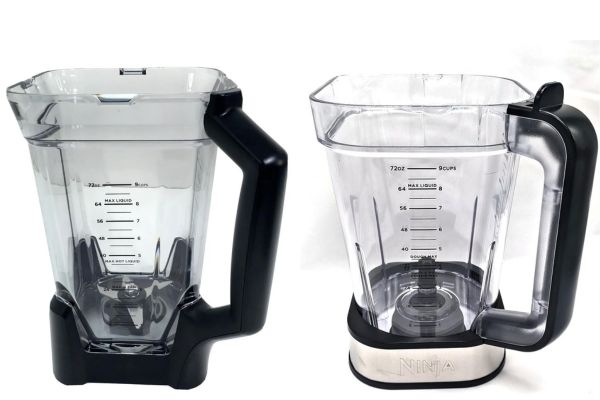
Both the Ninja CT810 and the Ninja SS351 come with large main pitchers, making them ideal for preparing big batches of smoothies, soups, or sauces. The CT810 has a 72-ounce capacity, but it’s important to note that it can only handle 64 ounces of cold liquids and 40 ounces of hot liquids. This capacity limit for hot ingredients is designed to prevent overflow. On the other hand, the SS351 also has a 72-ounce main jar, with a 64-ounce liquid capacity, providing similar versatility for large recipes.
Where the SS351 stands out is with its additional smaller jars. It includes a 24-ounce personal jar, perfect for single-serve recipes, and a 14-ounce Smoothie Bowl Maker, which is great for thicker mixtures like nut butter or smoothie bowls. The CT810 also comes with a 24-ounce container, but it’s primarily for self-cleaning and single-serve use, making the SS351 more flexible for different recipes.
Another key difference is in the material. Both models use BPA-free plastic for their jars, ensuring safety and durability. However, the Ninja CT810’s dishwasher-safe jars, lids, and tamper make cleanup especially convenient. Just toss them in the top rack of your dishwasher for a quick and easy clean. The SS351 offers similar convenience with its locking lid, which helps prevent spills during blending.
In terms of functionality, both blenders are designed to handle various kitchen tasks efficiently, but the SS351’s extra jars and versatility for single-serve and thicker recipes give it a slight edge for users who want more flexibility in their blending options. Meanwhile, the CT810 shines with its easy-to-clean design and its large capacity for making big batches.
LID Design Comparison
The both Ninja blenders have thoughtful lid designs, but they serve slightly different purposes in terms of functionality and ease of use.
The Ninja CT810 stands out with its two-part lid. This design allows you to remove the centerpiece of the lid while blending, which is perfect for adding ingredients or using the tamper to push down any stuck food. The lid is secured by two clips, ensuring it stays locked during use. This makes it both safe and convenient, as you don’t have to worry about it accidentally popping off. Additionally, the CT810 includes a to-go lid for the personal jar, turning it into a travel cup, which is super handy for busy mornings.
On the other hand, the Ninja SS351 features a spout-like lid with a small window that allows for easy pouring. This lid has a release button, making it simple to remove when blending is finished. However, aligning the lid correctly with the spout corner is crucial to ensure a proper lock. While the SS351’s lid isn’t as versatile for adding ingredients mid-blend, its design focuses more on secure sealing and easy removal.
Overall, the CT810 offers more versatility with its two-part lid and to-go feature, while the SS351 focuses on ease of use with a quick-release mechanism.
Motor Built Quality Comparison
Both blenders offer solid build quality but differ in key areas that may impact your user experience.
The Ninja SS351 is mostly made of plastic, but its build quality varies across different parts. The motor base feels less premium due to its thinner plastic, which might be a concern if you’re looking for something more robust. However, the jars and lids feel much sturdier, and the Power Nutri Bowl’s manually rotating arm adds to its reliability. A notable feature is the suction cup feet, which prevent slipping or movement during blending, keeping the machine stable and secure.
In comparison, the Ninja CT810 also has a primarily plastic build, but it feels generally sturdy and reliable. The motor performs well, but it’s not quite as solid as some other full-size Ninja models. One unique feature is its bright display screen, which makes it easy to navigate through different settings. Like the SS351, it has durable jars and lids that can withstand frequent use, comparable to premium models like the Vitamix A2300. The CT810 also includes suction cup feet, keeping it steady during high-speed blending.
Where the Ninja Chef Blender faces issues is with its motor quality. Some users, including us, noticed a persistent plasticky smell from the motor during blending, which didn’t fade after several uses. There were also reports of soot or dust coming from the motor vents, which even stained the countertop. While this might not be a widespread issue, it’s something to consider if motor durability is important to you.
Blade Shape & Speed Comparison
The Ninja Chef CT810 features a fixed blade design with six sharp blades at the bottom of the jar. This setup includes four horizontal blades and two smaller ones pointing upward, making it easier to clean without needing to remove any parts. Since the blade assembly is fixed, it is also dishwasher-safe, so you can place the entire jar in the dishwasher for convenience. However, unlike other blenders, the CT810 does not come with an additional blade assembly for the personal jar, which could be a drawback for those who need that flexibility.
On the other hand, the Ninja SS351 offers two separate blade assemblies. The full-size pitcher has a removable six-blade setup, which makes cleaning easier, especially when dealing with sticky or messy ingredients. The smaller jars, used for individual servings, come with “Hybrid Edge Blades” that consist of eight blades. These screw directly onto the jars and, like the CT810, are dishwasher-safe, so cleaning is hassle-free.
When it comes to power, the Ninja Chef CT810 packs a solid 1,500-watt motor, providing plenty of force for various blending tasks. The speed settings range from 7,100 RPM to 18,100 RPM, giving you fine control over the blending process. You can start slow and gradually increase the speed, which is useful for delicate tasks. However, even at its lowest speed, the CT810 isn’t particularly gentle, which can cause splashing if you’re working with smaller quantities of liquid, like salad dressings.
The Ninja SS351 operates on a slightly less powerful 1,200-watt motor. While it’s strong enough for most home blending tasks like smoothies and nut butters, it may struggle with extremely tough ingredients, such as fibrous vegetables or thick mixtures. Its speed range is also more limited, going from 1,300 RPM to 4,000 RPM. While this is sufficient for average blending, the lack of extreme speed might leave certain tougher ingredients less finely blended. For smoothies, sauces, and batters, though, it performs well enough for most home cooks.
Performance Comparison
Making Soups
The Ninja Chef Blender CT810 shines when it comes to blending hot ingredients. It’s especially useful for making soups, allowing you to turn roasted vegetables into a smooth puree with ease. However, you need to be mindful of the jar’s capacity when dealing with hot liquids. While it can hold up to 64 ounces for cold ingredients, it’s limited to 40 ounces for hot ones to ensure safe blending. This means you can make a decent-sized batch of soup, but it’s not ideal for larger portions. One of its standout features is the ‘Soup’ program, which is specifically designed for hot ingredients. It takes the guesswork out of blending, but it does come with a drawback. You can’t manually adjust the speed or settings when blending hot soups, which limits flexibility. While this doesn’t affect the quality of the soup, it might be frustrating if you’re used to more control.
On the other hand, the Ninja Foodi Power Pitcher System is not designed for hot blending at all. You have to let your ingredients cool before putting them in the jar, which can be a hassle if you’re in a rush to make soup. Another downside is that it struggles with fibrous vegetables like kale or broccoli, meaning it may not achieve the silky texture you want in a soup or sauce. Despite this, the Foodi Power Pitcher has a larger 72-ounce jar, which is useful if you need to make bigger batches of recipes in one go. However, this larger capacity doesn’t compensate for its limitations with hot ingredients or tougher veggies.
In summary, the Ninja Chef Blender CT810 is the better choice if you’re often blending hot ingredients and want consistently smooth soups. Its dedicated soup program and ability to handle tough vegetables make it a solid option, though the lack of flexibility with settings is a small drawback. The Ninja Foodi Power Pitcher System, while offering a larger capacity, struggles with hot blending and achieving smooth purees, making it less ideal for soups.
Making Nut Butter
The Ninja Chef Blender CT810 excels in processing large batches of nut butter with its dedicated ‘nut butter’ program. This feature runs for about 2 minutes, making it easy to blend nuts into a smooth, creamy texture. The program’s automatic shut-off is convenient, allowing you to step away while it blends. However, while the preset program is useful, we found that blending for just 2 minutes wasn’t enough to achieve the perfect consistency. To get the smoothest nut butter, you might need to run the program multiple times, depending on the type of nuts and the texture you’re aiming for. Despite this, the CT810 still scores impressively, earning 92 points for performance and a perfect 100 for the final texture. Overall, with 96.8 points, it’s a great option for those who like making homemade nut butter in larger batches.
On the other hand, the Ninja SS351 Foodi System takes a different approach. It uses a smaller, 14-ounce “Smoothie Bowl Maker” jar, which comes with a unique rotating arm mechanism that stirs the ingredients for you. This feature eliminates the need to stop and manually scrape down the sides of the jar, making the process far more efficient. The compact jar also ensures that the nuts stay close to the blades, resulting in faster and more even processing. In just a few minutes, you’ll have silky smooth nut butter with minimal effort. The auto-stirring feature is a major time-saver, particularly for recipes that usually require frequent stirring.
Fibrous Ingredients
The Ninja CT810 stands out as an excellent blender for both small and large batches of fibrous ingredients. When processing smaller amounts of tough vegetables like kale, it performs exceptionally well, especially when you use the manual mode at the highest speed setting. The blender can quickly turn those fibrous ingredients into a smooth mixture, which is why it easily earns 100 points in this category. Whether you’re working with smaller or larger batches, the Ninja CT810 delivers consistently smooth results without leaving any chunky bits behind.
In contrast, the Ninja Foodi Power Pitcher System also handles small amounts of fibrous ingredients quite well, though it doesn’t quite match the Ninja CT810’s perfection. It scores 88 points in this area, as it manages to blend kale into a smooth puree, leaving only a few tiny flecks. While the results are impressive, it takes a bit longer to break down the ingredients compared to the Ninja CT810. You’ll need to let it run for an extended period to achieve the same ultra-silky consistency.
However, the Ninja Foodi Power Pitcher shines when it comes to larger batches. The large pitcher makes blending leafy greens and other tough foods easy. After a minute or two of pulsing and blending, the final texture is luxuriously creamy, with only the smallest specks of fiber left. For this reason, it earns 95 points. Although it may take a little longer to reach that smooth texture, the overall blending performance is still impressive, especially considering the versatility it offers.
Ice Crushing
The Ninja CT810 is fantastic at turning ice into a snow-like texture, earning a perfect score of 100 points. It achieves this effortlessly, especially when you use the manual ‘pulse’ mode, which gives you more control over the process. This ensures that all the ice is evenly crushed, making it perfect for those who want precision. If you’re looking for a more hands-free experience, the high-speed setting is also effective, but there’s a small chance that a few chunks might be left behind. While the high-speed setting still delivers great results, the pulse mode is ideal for getting consistently smooth, snow-like ice.
On the other hand, the Ninja Foodi Blender is also excellent at crushing ice and received a perfect score of 100 points. Like the CT810, it can turn ice cubes into a fine, snow-like texture in just seconds. It’s best when used in manual blending mode, where it handles the task with ease.
In short, both Blenders are top performers for crushing ice. The CT810’s pulse mode offers a bit more precision, making it slightly better for those who want full control over the texture. However, both blenders can crush ice into a smooth, snow-like consistency in seconds, making them equally reliable for this task.
How of Use Comparison
The Ninja CT810 excels in giving you precise control with its 10-speed dial, allowing for easy adjustments depending on what you’re blending. This flexibility makes it great for handling both delicate and tougher ingredients. The blender also includes a programmable timer, which can automatically shut off after a set time, a feature typically seen in high-end models like the Vitamix A3500. This helps prevent overblending and protects the motor from overheating. For quick tasks, the pulse mode offers bursts of power at any speed you choose, making it especially useful when you need more control over the blending process.
One of the standout features of the CT810 is its 10 automatic blending programs. These preset functions are tailored for specific tasks, such as making smoothies, soups, or nut butter, and can be easily accessed via the ‘iQ’ button on the control panel. These programs are designed for convenience, though for something like nut butter, you may need to run the program more than once to achieve the smoothest texture. Additionally, the CT810 supports hot blending, with a special Soup preset that blends hot liquids safely and evenly, but you need to stick to the main pitcher for this, as the personal jar isn’t designed for hot ingredients.
On the other hand, the Ninja Foodi Blender offers a balance between manual control and preset programs. Like the CT810, it has a dial that allows you to select from 10 different speed levels, providing fine-tuned control over textures. However, the Foodi focuses more on simplicity with 5 built-in programs. Each program is designed for specific tasks like smoothies, spreads, chopping, and dough kneading. These programs run for precise times, like the Smoothie setting for 65 seconds or the Spread setting for 75 seconds, giving you the option for quick and easy results without much manual intervention.
One unique feature of the Foodi is the mini jar mode, which automatically defaults to the highest speed setting when used manually, ensuring maximum power in a smaller container. The pulse function is also handy, especially for crushing ice. The Foodi doesn’t support hot blending like the Chef blender, but it offers an Extract program for mini jars, ideal for making nut milk in small batches.
According to my test the Ninja CT810 is more suited for those who want more control and flexibility, especially with its extensive blending programs and hot blending capabilities. Meanwhile, the Ninja Foodi Power Pitcher System offers a more streamlined experience with fewer preset programs, but it still provides enough control for most blending tasks.
How to Clean Comparison
The Ninja Chef Blender CT810 and the Ninja SS351 Foodi Power Blender offer different experiences when it comes to cleaning.
For the Ninja CT810, cleaning is a bit easier compared to most full-size blenders. The blades are fixed, so you don’t need to remove them, which reduces the hassle of handling sharp parts. It also features a self-cleaning mode, which makes it much simpler to clean up sticky foods like nut butter. Just add warm water and a bit of soap, and the blender takes care of most of the cleaning. However, the 2-part lid and jar still require some manual cleaning, though it’s fairly quick. Overall, while there are some tricky areas, the CT810 offers a much smoother cleaning experience than other Ninja models.
On the other hand, the Ninja SS351 Foodi Blender has a mixed cleaning experience depending on the container. The smaller “Smoothie Bowl Maker” jar is incredibly simple to clean. You can add soapy water and run the blender, and the wide jar opening makes it simple to scrub without needing special brushes. The auto-stirring arms also clean up quickly with a light scrub. However, cleaning the larger pitcher is more of a challenge. The sharp blades require extra care to avoid cuts, and the area where the blades connect to the base tends to trap food particles, making it harder to clean thoroughly. You may need to dismantle parts of the assembly to get it fully clean.
Summary of cleaning test, the Ninja CT810 offers a more straightforward and quicker cleaning process, especially with its self-cleaning mode, while the Ninja SS351 is easier to clean when using smaller containers but more difficult with the larger pitcher.
Noise Level Comparison
The Ninja Chef Blender CT810 is one of the loudest models in the Ninja lineup. At maximum speed, it hits over 100 decibels, which is quite loud, even for a blender. Most blenders are noisy, especially at high speeds, but the CT810 stands out for its higher-than-average noise level. If you’re blending early in the morning or in a quiet setting, the sound may be more disruptive than expected.
In comparison, other Ninja models like the BL642 and BN801 also deliver smooth blending but manage to keep the noise slightly lower. While they’re still loud, they don’t reach the same decibel levels as the CT810. If you’re particularly sensitive to loud sounds, those options might be worth considering.
For many users, the power and performance of the CT810 will likely outweigh its noisier operation, but the sound level is something to keep in mind. It’s a tradeoff between getting a powerful blender and tolerating the extra noise. So, if noise is a big concern for you, exploring other models may be a better fit.
Final Verdict
After using both the Ninja Chef Blender CT810 and the Ninja SS351 Foodi Power Blender, I found that each has its own strengths, depending on what you’re looking for.
The CT810 impressed me with its versatility. Its 10-speed presets and programmable timer gave me precise control, especially for more complex tasks like nut butter and hot soups. However, I did notice it’s on the louder side—hitting over 100 decibels at full speed, which could be disruptive. Cleaning wasn’t too bad thanks to the self-cleaning mode, but the fixed blades meant some manual scrubbing was still needed.
The SS351 Foodi, on the other hand, felt more user-friendly. I loved the convenience of the auto-stirring jar for making smoothies and spreads. It’s quieter than the CT810, and the smaller jars were much easier to clean. However, the larger pitcher took more time to clean, especially around the blade assembly. While it doesn’t offer as much precision as the CT810, its preset programs and overall simplicity made everyday blending much easier.
In reality, if you need more control and versatility, I’d go with the Ninja Chef Blender CT810. But if you prefer something straightforward with less noise, the Ninja SS351 Foodi Power Blender would be my pick.

